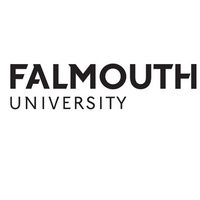'East Street Bottling Co.' Packaging
How does location make a brand or product unique? For this brief, I created the packaging and brand design for a fictional alcohol company. East Street Bottling Co. is representative of Rye, in East Sussex, using local knowledge, the culture, and history of the space to shape the brand's identity. The drink I have chosen to produce for the brand is gin and tonic, infused with the Alexander plants found at Rye Harbour Nature Reserve.
Ypres Tower (also known as Rye Castle, or Ypres Castle) has a museum at 3 East Street, with exhibitions that "tell the stories of the history of Rye, its inhabitants and the surrounding area". Before the East Street building was purchased in 1992 to be part of the museum, it had been used as a beer bottling factory. The name East Street Bottling Company is a tribute to this important piece of Rye's alcohol processing history.
I took the footprint of Ypres Tower, the iconic Rye landmark, and used it's literal mark on the ground as a logomark for the brand.
There is a poster outside of Rye Harbour's Watch House, describing the history of the lifeboats and their crews – the type on the poster is Monotype's 'Headline Pro Bold', which is a perfect fit for the brand's typeface.
Rye Harbour Nature Reserve is an important part of Rye's charm, both to tourists and locals, and is particularly important because of the animal and plant species that are found there. At the nature reserve there is a building known as the Red Shed, it's not just where a fisherman keeps his crab nets, but is also an iconic landmark and possibly the most photographed shed in East Sussex. This tin design uses the Red Shed, as a symbol of the value of the nature reserve.
17th March 1743, in St Mary's dark churchyard. John Breads, a Rye butcher and publican, attempted to stab the mayor James Lamb – but in a case of mistaken identity, he stabbed and killed the deputy Allen Grebell. He was arrested the next morning after shouting about it around the town, and held in Ypres Castle. After being sentenced by the mayor, he had a final drink at his pub, and was hanged. After his death he was held in a metal 'gibbet' cage, looking over Gibbet Marsh for over 50 years. His skull is still in the cage, which can be seen at Rye Museum. This tin design is based on John Bread's gibbet cage.
The storm of February 1287 took a huge hit the South East coast. Hastings harbour was destroyed – taking down part of the cliff and half of Hastings Castle, Winchelsea town was abandoned, and mud from Dungeness blocked off the port of New Romney, leaving it a mile away from the sea. The River Rother made a new path to the sea at Rye, which made it a viable port. Rye's status as a Cinque Port Ancient Town was upgraded, giving it a better role of providing trade and defence. This tin design pays tribute to Rye's interactions with the sea throughout history.
In the 18th Century, Rye was a smuggler's town, using the marshes and waterways to bring in pirated tea and other goods, using a network of secret tunnels under the Mermaid Inn. Rudyard Kipling even wrote a poem about Rye's smuggling. This tin is inspired by Mermaid Street's smuggling history.

